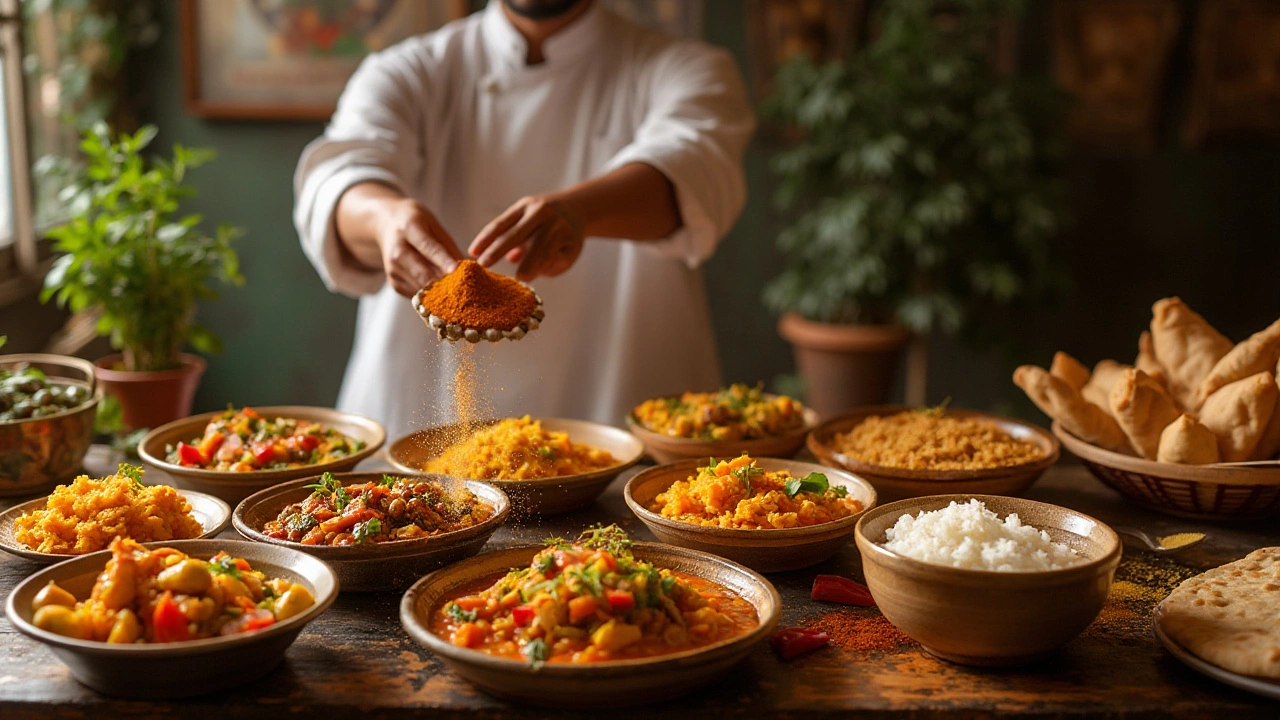Indian Vegetarian Food: Simple Recipes and Smart Tips
Indian cooking is famous for its veg dishes, and you don’t need a fancy kitchen to make them. From spicy lentil stews to sweet treats, the options are huge and all doable at home. Below you’ll find the basics that every beginner needs, plus a few tricks to keep things healthy without losing the flavor.
Everyday Vegetarian Staples
Start with the beans and grains that form the heart of most Indian meals. Dal – the word for split lentils – is the most common. Whether you pick toor (pigeon pea), moong (green gram) or masoor (red lentil), the cooking steps stay the same: rinse, boil with water, add turmeric, then finish with a tempering of mustard seeds, curry leaves, chiles and a pinch of asafoetida. The tempering is what makes the dish pop, and you can do it in a separate pan to keep the pot from boiling over.
Another go‑to is vegetable biryani. It looks fancy but is just rice layered with sautéed veggies, spices, and a little yogurt. Use pre‑soaked basmati, cook it half‑way, then add the veg mix, a dab of ghee and a sprinkle of garam masala. Cover and let the steam finish the rice. The result is aromatic and filling.
If you want something quick, try a one‑pot coconut chickpea curry. Toss canned chickpeas, coconut milk, chopped tomatoes, and a spoonful of curry powder in a saucepan. Simmer for ten minutes, add a handful of coriander, and serve over rotis or rice. The coconut adds richness without needing cream.
Healthier Sweet Choices
Indian sweets often get a bad rap, but many can fit into a balanced diet. Look for recipes that use jaggery or dates instead of refined sugar. For example, date‑sweetened payasam mixes cooked rice, milk, and blended dates for a creamy dessert that’s lower on the glycemic index.
Another easy option is a fruit‑based kheer. Swap the usual rice for quinoa or millet, add almond milk, a pinch of cardamom, and fresh mango chunks. It feels indulgent but packs protein and fiber.
When you crave traditional sweets like gulab jamun, try baking them instead of deep‑frying. Shape the dough, bake until golden, then soak in a light sugar‑spice syrup. You still get the soft texture, just with less oil.
Overall, Indian vegetarian cooking is about balancing spices, textures, and nutrition. Keep a few pantry staples – lentils, rice, spices, and coconut milk – on hand, and you can whip up a satisfying meal in under 30 minutes. Experiment with the tempering technique, swap refined sugar for natural sweeteners, and enjoy the vibrant flavors without any hassle.
Exploring the Health Benefits of Indian Vegetarian Cuisine
Indian vegetarian food offers a wide array of delicious and nutrient-rich options that are gaining popularity worldwide. The healthiness of these dishes largely stems from their use of fresh vegetables, whole grains, and a variety of spices, which not only enhance flavor but also provide numerous health benefits. Understanding the nutritional components and cooking methods used in Indian vegetarian cuisine can shed light on how these dishes can be both tasty and good for you. Learn about how traditional Indian meals balance nutrition and flavor, making them an excellent choice for anyone seeking a healthy diet.
